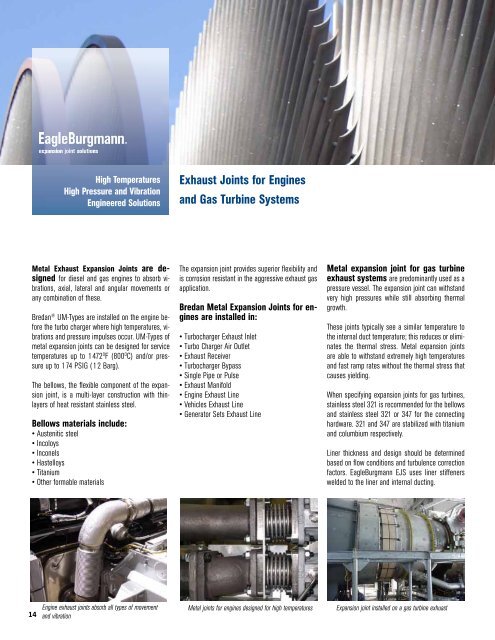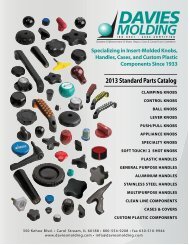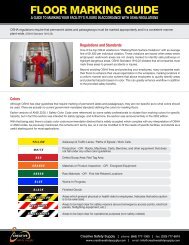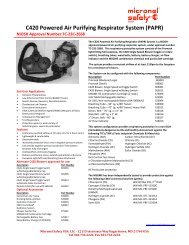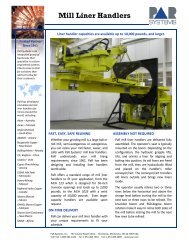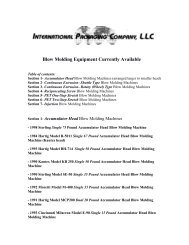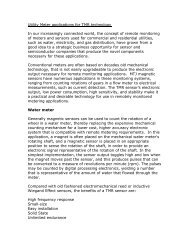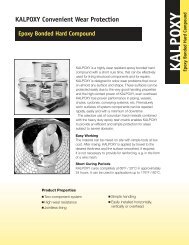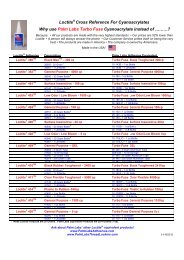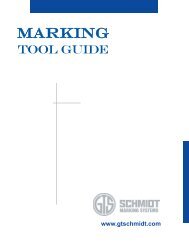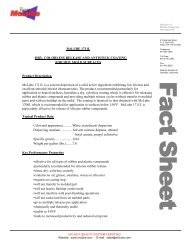Metal Expansion Joints - ThomasNet
Metal Expansion Joints - ThomasNet
Metal Expansion Joints - ThomasNet
Create successful ePaper yourself
Turn your PDF publications into a flip-book with our unique Google optimized e-Paper software.
14<br />
High Temperatures<br />
High Pressure and Vibration<br />
Engineered Solutions<br />
<strong>Metal</strong> Exhaust <strong>Expansion</strong> <strong>Joints</strong> are designed<br />
for diesel and gas engines to absorb vibrations,<br />
axial, lateral and angular movements or<br />
any combination of these.<br />
Bredan ® UM-Types are installed on the engine before<br />
the turbo charger where high temperatures, vibrations<br />
and pressure impulses occur. UM-Types of<br />
metal expansion joints can be designed for service<br />
temperatures up to 1472 O F (800 O C) and/or pressure<br />
up to 174 PSIG (12 Barg).<br />
The bellows, the flexible component of the expansion<br />
joint, is a multi-layer construction with thinlayers<br />
of heat resistant stainless steel.<br />
Bellows materials include:<br />
• Austenitic steel<br />
• Incoloys<br />
• Inconels<br />
• Hastelloys<br />
• Titanium<br />
• Other formable materials<br />
Engine exhaust joints absorb all types of movement<br />
and vibration<br />
Exhaust <strong>Joints</strong> for Engines<br />
and Gas Turbine Systems<br />
The expansion joint provides superior flexibility and<br />
is corrosion resistant in the aggressive exhaust gas<br />
application.<br />
Bredan <strong>Metal</strong> <strong>Expansion</strong> <strong>Joints</strong> for engines<br />
are installed in:<br />
• Turbocharger Exhaust Inlet<br />
• Turbo Charger Air Outlet<br />
• Exhaust Receiver<br />
• Turbocharger Bypass<br />
• Single Pipe or Pulse<br />
• Exhaust Manifold<br />
• Engine Exhaust Line<br />
• Vehicles Exhaust Line<br />
• Generator Sets Exhaust Line<br />
<strong>Metal</strong> expansion joint for gas turbine<br />
exhaust systems are predominantly used as a<br />
pressure vessel. The expansion joint can withstand<br />
very high pressures while still absorbing thermal<br />
growth.<br />
These joints typically see a similar temperature to<br />
the internal duct temperature; this reduces or eliminates<br />
the thermal stress. <strong>Metal</strong> expansion joints<br />
are able to withstand extremely high temperatures<br />
and fast ramp rates without the thermal stress that<br />
causes yielding.<br />
When specifying expansion joints for gas turbines,<br />
stainless steel 321 is recommended for the bellows<br />
and stainless steel 321 or 347 for the connecting<br />
hardware. 321 and 347 are stabilized with titanium<br />
and columbium respectively.<br />
Liner thickness and design should be determined<br />
based on flow conditions and turbulence correction<br />
factors. EagleBurgmann EJS uses liner stiffeners<br />
welded to the liner and internal ducting.<br />
<strong>Metal</strong> joints for engines designed for high temperatures <strong>Expansion</strong> joint installed on a gas turbine exhuast


